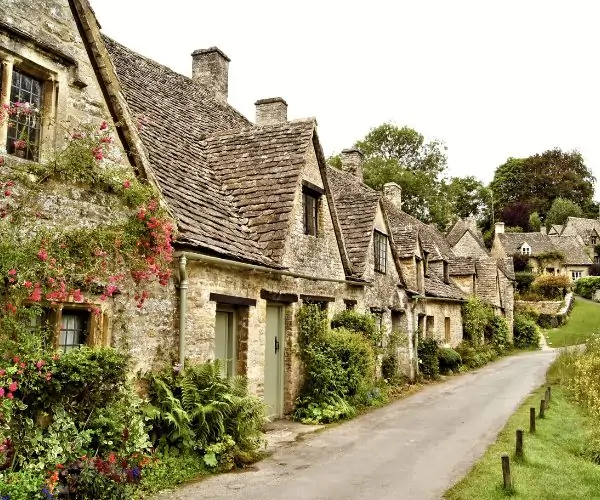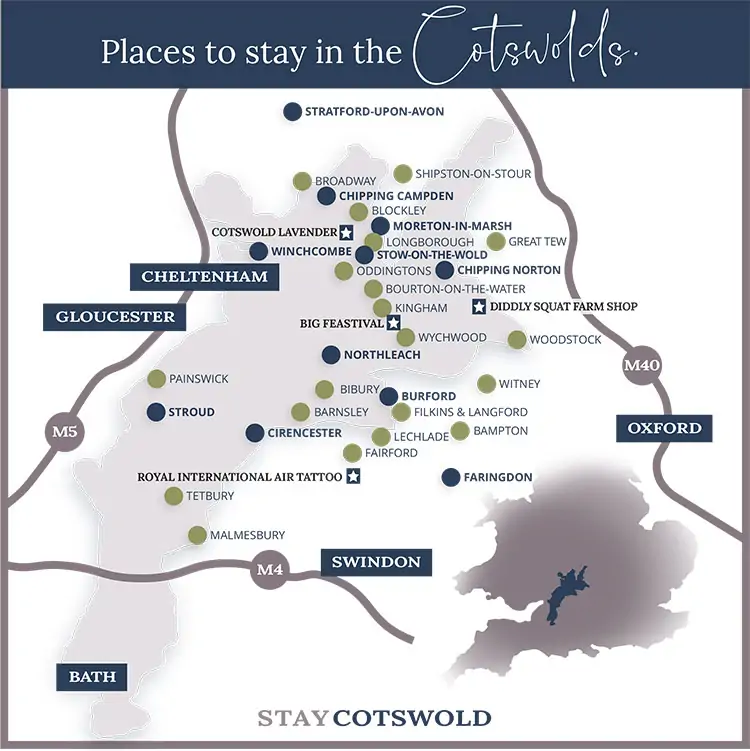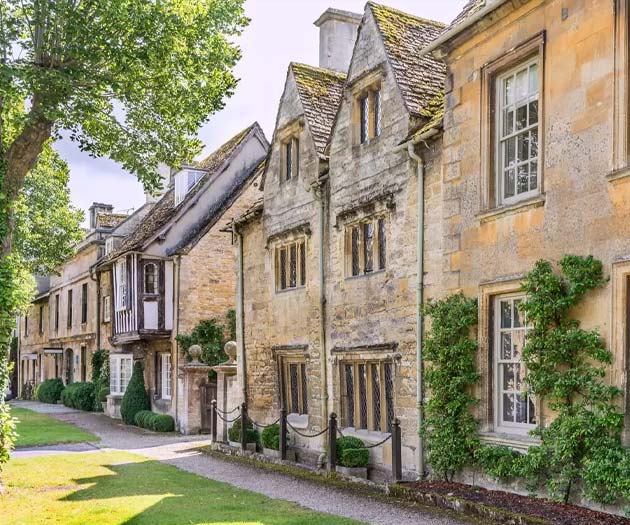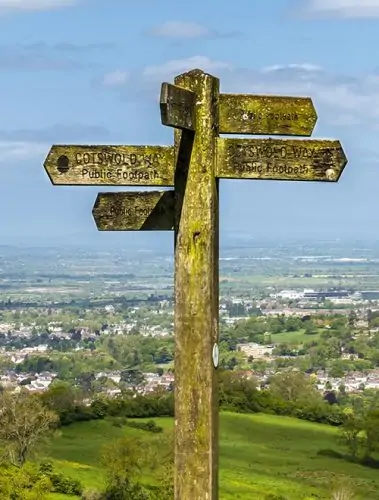The Cotswolds is the UK’s largest designated Area of Outstanding Natural Beauty (A.O.N.B.), covering approximately 800 square miles in the Central South West of England, approximately 80% of which is farmland.
Lying to the East of the River Severn where it joins the Bristol Channel, it incorporates parts of several counties, predominantly Gloucestershire and Oxfordshire, but also parts of Somerset and Wiltshire to the South, and Worcestershire and Warwickshire to the North. A landscape of undulating green hills peppered with pretty villages built from the local ‘honey-coloured’ stone characterises the region.
Where to go in the Cotswolds
Gloucestershire constitutes the largest region of The Cotswolds and includes well-known towns and villages such as Moreton-in-Marsh – now accessible by train from London, Paddington, Stow-on-the-Wold – the highest of The Cotswolds towns, and Bourton-on-the-Water – the ‘Little Venice’ of the region. It is also home to the City of Gloucester with its magnificent Gothic cathedral, the Regency spa town of Cheltenham, and Cirencester – known as the ‘Capital of the Cotswolds’ due to its rich Roman history.
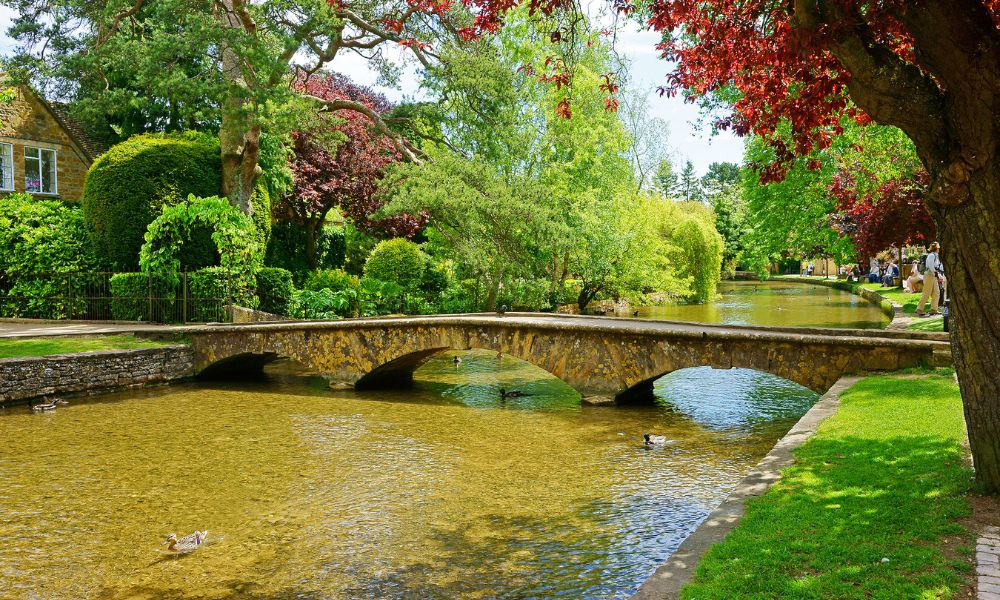
Worcestershire just brushes the borders of the Cotswolds at Gloucestershire’s Northern end, and is home to the village of Broadway. Lying close to ‘The Cotswold Edge’ – a geological escarpment – this pretty village is often deservedly referred to as the ‘Jewel of the Cotswolds’.
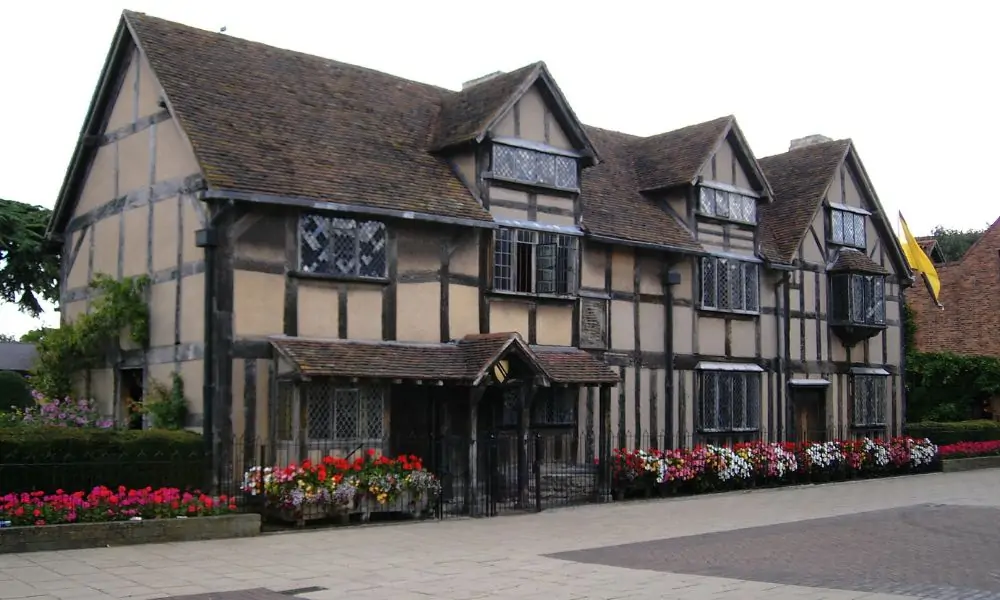
Warwickshire, situated between Worcestershire and Oxfordshire, also just skirts the outer edges of The Cotswolds, but is well-known as the birthplace of one of England’s most famous sons – William Shakespeare. Stratford-upon-Avon, while not actually a Cotswolds town, is nonetheless an important gateway to the area, and is certainly one of the UK’s most popular tourist attractions. A must-see for any fans of ‘The Bard’.
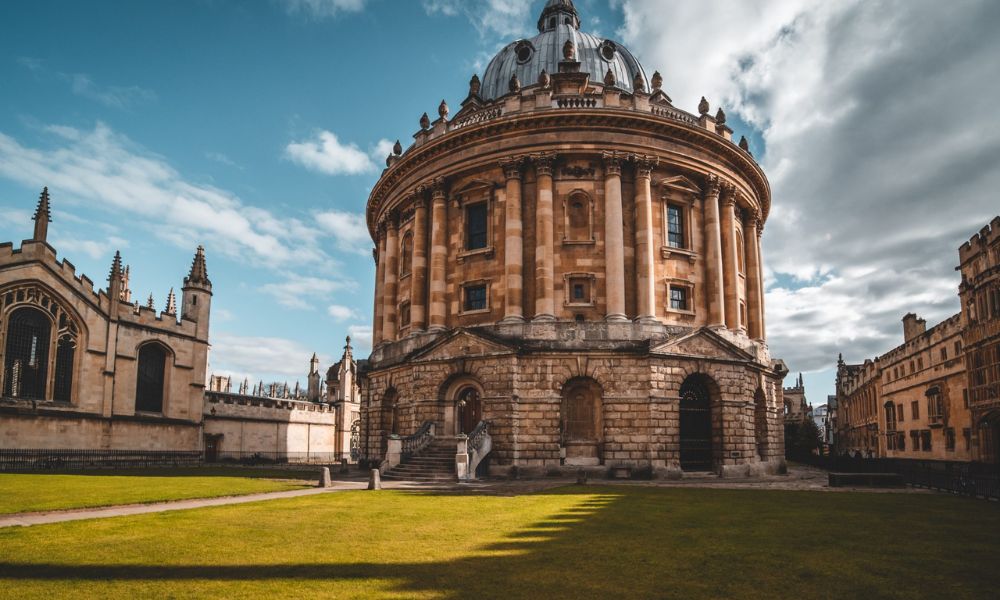
Oxfordshire constitutes the second largest area of The Cotswolds and whilst the City of Oxford itself is not officially part of the region, it sits just outside its borders, and so, if you’re staying in one of our fabulous properties, a day trip to the world-famous university town is definitely doable. As a county, Oxfordshire’s contribution to The Cotswolds includes the busy market town of Chipping Norton – formerly the centre of The Cotswolds’ wool-trade, and Woodstock – home to Churchill’s birthplace: the magnificent Blenheim Palace.
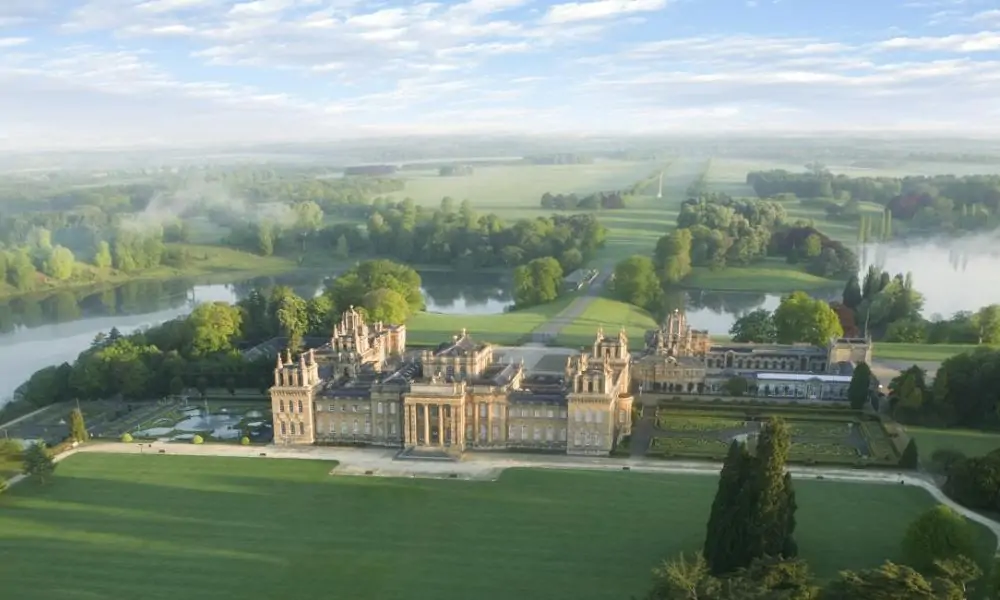
Wiltshire, sitting to the South East of The Cotswolds, can boast what has been referred to as the prettiest village in England – Castle Combe. Once an important town in the local weaving industry, the cottages where the workers wove their trade still exist to this day. And the picturesque village, easily accessible from the M4, has most recently featured as the filming location for Steven Spielberg’s ‘War Horse’.
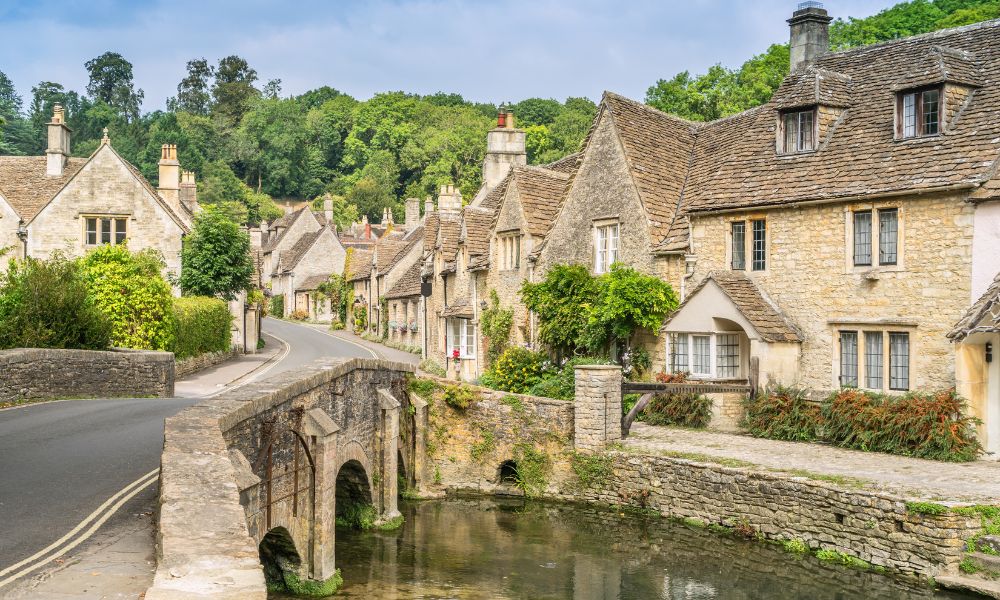
Somerset, right at the Southern tip of The Cotswolds, just makes the cut. An honorary member of The Cotswolds, you might say. But, as the historic city of Bath sits just outside the official Cotswolds boundary, a very important one. This Roman Spa town is steeped in ancient history and the city is famed for its stunning Regency architecture.
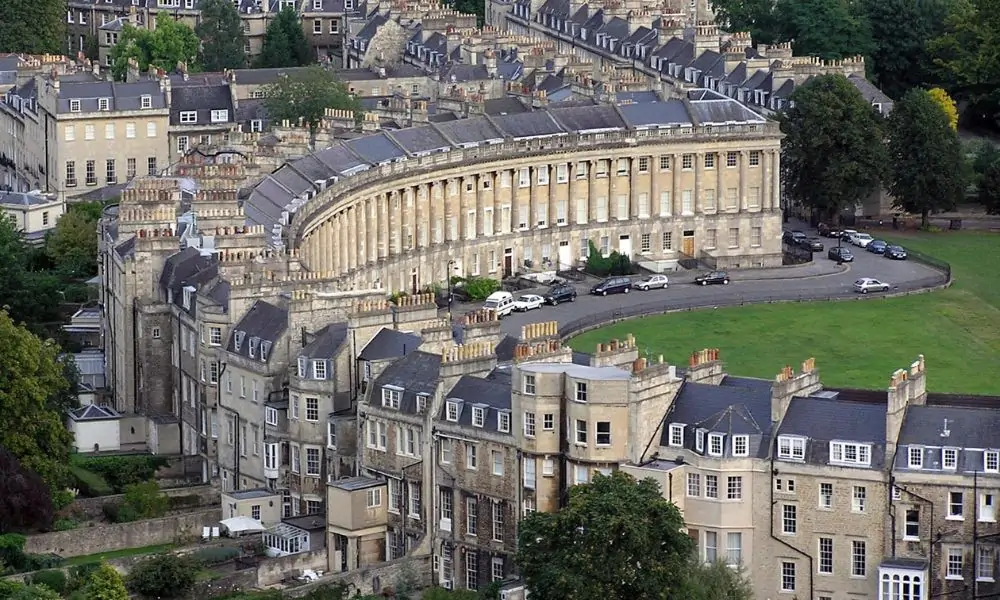
The location of The Cotswolds’ – close to two major motorways and on the border with Wales, makes it a very accessible holiday location. Its proximity to the M4 – linking East to West via the M25 – and the M5 – connecting the SW to the North and Scotland via Birmingham, along with its excellent public transport links, makes it an ideal getaway destination.
You can find out how to get to The Cotswolds, plus discover more places to stay in the Cotswolds and browse our accommodation online today! All of which leaves you with only one question:
